Unveiling the Cultural Significance of the Constellation Gemini in Different Societies
The constellation Gemini has captivated the imaginations of people for centuries, appearing as a pair of twins among the stars. Its enigmatic nature has sparked fascination in various societies, each weaving their unique cultural significance around it. From ancient mythology to astrological interpretations and contemporary pop culture references, Gemini has left an indelible mark across time and civilizations. In this article, we delve into the multifaceted tapestry of Gemini’s cultural significance, exploring its presence in ancient mythology, astrology, art, literature, and indigenous cultures. Join us on a journey through history as we unravel the mysteries and meanings behind the constellation Gemini.
Contents
- Gemini in Ancient Mythology
- Gemini in Astrology
- Gemini in Art and Literature
- Gemini in Indigenous Cultures
- Contemporary Significance of Gemini
- Conclusion
-
Frequently Asked Questions
- 1. What is the origin and meaning of the Zodiac constellations?
- 2. How does Gemini fit into the intricate Mayan calendar system?
- 3. Are there any connections between Gemini and the lesser-known Ophiuchus constellation?
- 4. How are the twin gods Castor and Pollux honored in ancient Greek culture?
- 5. What role does Gemini play in Vedic astrology?
- 6. Are there any literary references to Gemini in ancient texts?
- 7. How do Native American indigenous cultures interpret the significance of Gemini?
- 8. What is the contemporary significance of Gemini in pop culture?
- 9. How do astrologers interpret the personality traits of Gemini individuals?
- 10. Does Gemini hold any spiritual significance or symbolism?
- References
-
Frequently Asked Questions
- What is the cultural significance of the constellation Gemini?
- How does Gemini feature in Greek mythology?
- What is the significance of Gemini in Egyptian mythology?
- How is Gemini portrayed in Chinese mythology?
- What is the role of Gemini in Western astrology?
- How does Gemini feature in Vedic astrology?
- What is the significance of Gemini in Mayan astrology?
- How is Gemini portrayed in art and literature?
- What is the role of Gemini in indigenous cultures?
- How does Gemini hold contemporary significance?
- References
- Read More
Gemini in Ancient Mythology
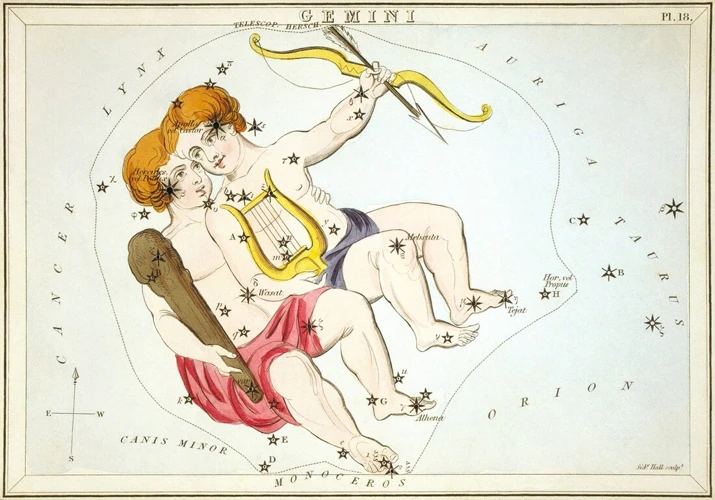
The constellation Gemini holds a prominent place in ancient mythology, with rich and varied stories associated with its celestial presence. In Greek mythology, Gemini is often associated with the divine twins, Castor and Pollux, known as the Dioscuri. According to the myth, they were born from an egg after their mother Leda was seduced by Zeus in the form of a swan. Castor was mortal, while Pollux was immortal, and they became renowned for their exceptional bond and bravery. The tale of the Dioscuri has been immortalized in numerous works of art and literature, showcasing their brotherhood and loyalty.
In Egyptian mythology, Gemini is linked to the story of the twin gods, Horus and Set. Horus, the falcon-headed god, represented the daytime and light, while Set, the jackal-headed god, symbolized the nighttime and darkness. Their eternal battle for supremacy and balance between light and dark is reflected in the dual nature of Gemini, showcasing the cosmic duality prevalent in ancient Egyptian beliefs.
In Chinese mythology, Gemini finds its counterpart in the story of the Weaver Maid and the Cowherd. The Weaver Maid, symbolizing the star Vega, and the Cowherd, symbolizing the star Altair, were lovers who were separated by the Milky Way. They were only allowed to meet once a year, during the festival of Qi Xi, when a bridge of magpies formed across the celestial river. This fascinating love story behind Gemini illustrates the Chinese belief in the connection between heavenly bodies and human emotions.
The ancient mythologies surrounding Gemini highlight the recurring themes of duality, love, and the interplay between light and dark. These stories not only provide cultural context but also offer a glimpse into the deep-rooted human fascination with the celestial wonders above.
Greek Mythology
In Greek mythology, the constellation Gemini is intimately associated with the legendary twins Castor and Pollux, who are collectively known as the Dioscuri. The mythological tale of Castor and Pollux is a captivating story of brotherly love, bravery, and immortality. Born from an egg after their mother Leda was seduced by Zeus in the form of a swan, Castor and Pollux were inseparable in their adventures and quests.
Castor, the mortal twin, was known for his exceptional equestrian skills and bravery in battle. He was celebrated for his horsemanship and served as a symbol of skillful warfare. Pollux, on the other hand, was bestowed with immortality by Zeus. He exhibited outstanding boxing prowess and was regarded as the protector of sailors and voyagers.
The story of Castor and Pollux emphasizes the unbreakable bond between brothers, loyalty, and bravery. Greek art and literature depicted their companionship through various mediums, including sculptures, paintings, and poems. The constellation Gemini, with its two bright stars representing the twins, served as a celestial reminder of their immortal legacy.
It is worth noting that the presence of Gemini in Greek mythology is just one facet of this constellation’s cultural significance. To explore more about Gemini’s role in different societies and its connection to astrology and art, continue reading further in this article.
Egyptian Mythology
In Egyptian mythology, the constellation Gemini holds a significant place in the ancient culture’s belief system and cosmology. The Egyptians associated Gemini with the twin gods, Horus and Set. Horus, often depicted as a falcon-headed god, represented the daytime, while Set, portrayed as a jackal-headed god, symbolized the nighttime. The concept of duality was integral to Egyptian mythology, and the twin gods’ eternal struggle represented the perpetual battle between light and darkness in the world.
The Egyptian civilization revered the celestial bodies and believed that they held great power and influence over human affairs. Gemini’s presence in the sky served as a reminder of this cosmic interplay between opposing forces. Its position in the zodiac also played a role in astrological interpretations, guiding the Egyptians in matters of destiny and personal characteristics.
Astoundingly, the Egyptians also linked Gemini to their creation myths. They connected the constellation’s presence in the sky with the story of the god Atum-Ra, who created the universe by self-generating from the primeval waters of chaos known as Nun. By aligning Gemini with the primordial act of creation, the Egyptians perceived the constellation as an emblem of divine power and cosmic order.
The profound significance of Gemini in Egyptian mythology showcases the civilization’s reverence for the celestial realm and their belief in the interconnectedness of the heavens and the human experience.
Chinese Mythology
In Chinese mythology, the constellation Gemini holds its own unique significance, closely tied to the story of the Weaver Maid and the Cowherd. This legendary tale immortalizes the love between these celestial beings, who were separated by the vast expanse of the Milky Way. The Weaver Maid, represented by the star Vega, was a skilled weaver, while the Cowherd, symbolized by the star Altair, was a humble herder. Their forbidden love touched the heavens, and the deities allowed them to meet once a year on the seventh day of the seventh lunar month.
On this special day, magpies would form a bridge across the sky, known as the Qi Xi festival or the Double Seventh Festival, allowing the Weaver Maid and the Cowherd to reunite. In Chinese culture, this festival is celebrated to honor the power of love, as well as the connection between the earthly and heavenly realms. The story of the Weaver Maid and the Cowherd is deeply ingrained in Chinese folklore and serves as a reminder of the significance of love, devotion, and the eternal bond between two souls.
The tale of the Weaver Maid and the Cowherd is just one example of the captivating myths and legends found in Chinese mythology, which often draw inspiration from the celestial realm. These stories reflect the cultural values and beliefs of the Chinese people, highlighting the importance of love, harmony, and the interconnectedness of all things.
Gemini in Astrology
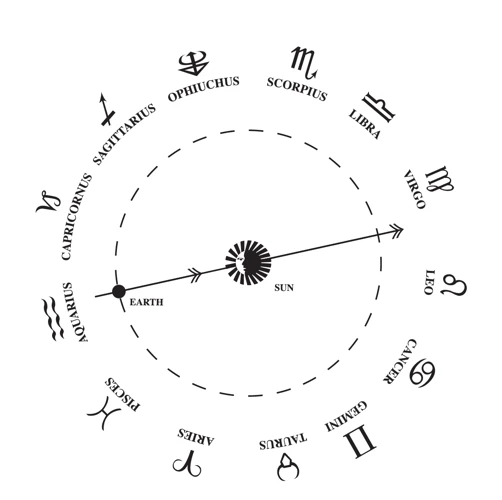
In Western astrology, Gemini is represented by the symbol of the twins, reflecting the duality and adaptable nature of those born under this sign. Individuals born between May 21 and June 20 are considered Geminis, and they are believed to possess quick wit, versatility, and excellent communication skills. Geminis are known for their ability to adapt to different situations and their innate curiosity, constantly seeking new experiences and knowledge. This air sign is ruled by the planet Mercury, which further enhances their intellectual abilities and communication prowess.
In Vedic astrology, Gemini corresponds to the Indian zodiac sign known as Mithuna. Individuals born under this sign, typically between June 15 and July 15, are believed to possess qualities such as intelligence, curiosity, and a strong desire for exploration. Mithuna is associated with the element of air and is ruled by the planet Mercury, aligning with the Western astrological interpretation of Gemini. Vedic astrology considers the influence of Gemini on an individual’s personality and life path, taking into account factors such as planetary positions and birth charts to provide insights into their characteristics and destiny.
Within the intricate Mayan calendar system, Gemini corresponds to the sign known as Eb. People born under this sign, spanning from June 7 to June 27, are believed to possess qualities such as flexibility, communication skills, and adaptability. Eb symbolizes the path of life and is associated with the energy of introspection and analysis. Mayan astrology emphasizes the interconnectedness between the physical and spiritual realms, and the presence of Gemini in this system indicates the significance of intellectual pursuits and the quest for balance in one’s life.
Western Astrology
Western astrology has long been associated with the constellation Gemini, attributing distinct personality traits and characteristics to individuals born under this zodiac sign. Geminis are often seen as versatile, intellectual, and communicative individuals who possess a natural curiosity and adaptability.
In Western astrology, Gemini is ruled by the planet Mercury, which governs communication, intellect, and expression. This association further enhances the emphasis on the verbal and mental prowess of Geminis. They are known for their gift of gab, quick wit, and ability to engage in meaningful conversations on a wide range of topics.
The dual nature of Gemini is represented by their symbol, the Twins. This duality manifests in their personality as well, as Geminis can exhibit both extroverted and introverted traits. They are social butterflies who are at ease in social gatherings, but they also crave their moments of solitude and introspection.
As an air sign, Geminis are creative and possess a love for learning. They are often drawn to artistic pursuits, literature, and intellectual pursuits. Their keen intelligence and ability to adapt quickly make them natural problem solvers and strategic thinkers.
In astrology, Geminis are associated with the third house, which represents communication, curiosity, and learning. This alignment further emphasizes the importance of intellectual stimulation and constant mental growth for individuals born under this sign. Geminis thrive in environments where they can express their ideas, engage in debates, and explore diverse perspectives.
It is important to note that astrological interpretations may vary, and individual birth charts play a significant role in determining a person’s unique traits and life path. However, the influence of Gemini in Western astrology provides a valuable framework for understanding the characteristics and tendencies of individuals born under this zodiac sign.
Vedic Astrology
Vedic astrology, an ancient Indian system of astrology, incorporates the constellation Gemini into its astrological interpretations. According to Vedic astrology, Gemini is represented by the symbol of “Mithuna” and is associated with the element of air. People born under the sign of Gemini are believed to possess dualistic traits and a natural affinity for communication and intellectual pursuits. The ruling planet of Gemini in Vedic astrology is Mercury, known as the planet of communication and intelligence.
In Vedic astrology, Gemini is often associated with the nakshatra (lunar mansion) called Ardra, which is represented by a teardrop. Ardra is associated with the deity Rudra, the fierce form of Lord Shiva. It is believed that individuals born under this nakshatra may possess transformative and intense qualities.
As per Vedic astrology, Gemini represents the third house, which symbolizes communication, siblings, short journeys, and intellectual pursuits. The placement of Gemini in a person’s birth chart can provide insights into their communication style, learning abilities, and relationship with siblings. Astrologers often analyze the position of planets and other celestial bodies within Gemini to make predictions and offer guidance related to these aspects of an individual’s life.
Vedic astrology embraces the influence of Gemini within its system, recognizing its significance in shaping the personality traits and life experiences of those born under its influence. The depth and complexity of Vedic astrology offer a unique perspective on the celestial phenomena, guiding individuals towards a better understanding of themselves and their place in the universe.
Mayan Astrology
Mayan astrology, an integral part of the intricate Mayan calendar system, holds a unique perspective on the constellation Gemini. In Mayan culture, the Twins, known as Hunahpu and Xbalanque, feature prominently in their mythology. These twin heroes embarked on heroic quests and adventures, displaying their strength, intelligence, and bravery. They were symbols of balance and harmony, representing the cosmic equilibrium that governs the universe.
The Mayans believed that each person had a “nahual,” a spiritual animal counterpart that corresponded to their birth date in the Mayan calendar. Those born under the sign of the Twins were considered to possess the qualities and characteristics associated with Hunahpu and Xbalanque. They were thought to be adaptable, capable of multitasking, and possessing a harmonious balance between their mind and heart.
The Mayan astrological system, like other ancient astrological beliefs, sought to discover the connections between celestial bodies and human destiny. By understanding the influence of the Twin constellation, Mayan astrologers could interpret the impact it had on an individual’s personality traits, relationships, and life path.
The intricate Mayan calendar system and its astrological interpretations offer a fascinating insight into the cultural significance of Gemini in Mayan culture. Exploring the correlations between celestial events and human existence continues to be a subject of intrigue and reverence in our modern world.
Gemini in Art and Literature
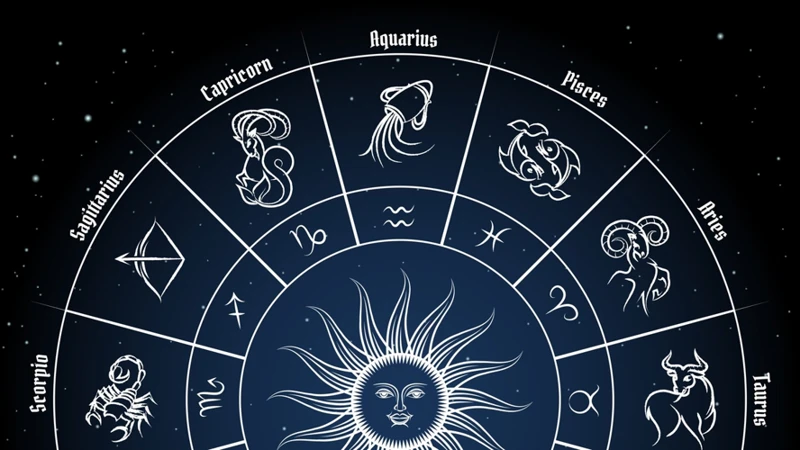
The constellation Gemini has inspired numerous artistic and literary works throughout history, showcasing its cultural significance in the realms of creativity and imagination. In the realm of art, Gemini has been depicted in various paintings and sculptures, often emphasizing the twin nature of the constellation. Artists have skillfully captured the essence of Gemini’s duality, portraying the divine twins, Castor and Pollux, in their mythological glory. One notable painting is “Gemini” by Italian Renaissance artist Sandro Botticelli, where he depicts the twins as graceful figures against a celestial backdrop, symbolizing the celestial harmony and balance they represent.
Literature has also been deeply influenced by the presence of Gemini. From ancient Greek epics to modern novels, references to the constellation abound. Gemini’s duality and the themes of brotherhood, loyalty, and balance have been incorporated into the fabric of numerous literary works. In William Shakespeare’s play “The Comedy of Errors,” the confusion created by twins separated at birth serves as a comedic device, showcasing the intriguing nature of twin connections.
Gemini’s association with duality and the zodiac has become a source of inspiration for writers exploring themes of identity, self-discovery, and the human psyche. Writers often use the symbolism of Gemini to explore the complexities and contradictions within their characters, creating multi-dimensional and relatable portrayals.
The presence of Gemini in art and literature not only reflects the cultural significance of the constellation but also speaks to the enduring fascination with the mysteries of the human condition and the interconnectedness of the celestial realm with our earthly existence.
Paintings and Sculptures
Paintings and sculptures throughout history have depicted the constellation Gemini, often drawing inspiration from the mythological tales surrounding this celestial symbol. Artists have been inspired by the duality and human connection represented by the twin figures. In Renaissance art, the painting “The Education of the Children of Castor and Pollux” by Pierre Mignard portrays the mythological twins as young boys receiving education from the gods. The painting highlights their immortal lineage and intellectual pursuits.
Another notable artwork featuring Gemini is the sculpture “The Dioscuri” by Praxiteles, an ancient Greek sculptor. This masterpiece captures the divine twins in their iconic pose, standing side by side. The skilled craftsmanship and attention to detail exemplify the significance that Gemini held in ancient Greek culture.
From ancient times to the present day, artists have found inspiration in the celestial wonders of Gemini. These artistic interpretations not only showcase the beauty of the constellation but also serve as a visual representation of the cultural significance associated with it.
Literary References
- In William Shakespeare’s play “Twelfth Night,” the character Viola delivers a famous line referencing Gemini: “I am not what I am.” This line encapsulates the mutable nature of Gemini, with its symbolizing twins often embodying different personas or disguises.
- In the novel “Dr. Jekyll and Mr. Hyde” by Robert Louis Stevenson, the duality of the main character reflects the dual nature of Gemini. Dr. Jekyll represents the rational, respectable side, while Mr. Hyde represents the dark, impulsive side. This parallel highlights the Gemini’s connection to duality and the internal struggle between conflicting aspects.
- Astrological references to Gemini can also be found in the works of Emily Dickinson, a renowned poet. Her poem “We Meet at the Judgment” references the constellation and its association with the soul’s journey after death, exploring the concept of duality in the afterlife.
- Another notable literary reference to Gemini is in F. Scott Fitzgerald’s novel “The Great Gatsby,” where the character of Jay Gatsby is depicted as a mysterious and enigmatic figure, much like the constellation itself. Gatsby’s duplicity and his attempt to present multiple identities align with the multifaceted nature of Gemini.
Literary works throughout history have captured the essence of Gemini, utilizing its symbolism to explore themes of duality, identity, and the complex nature of human existence. These references in literature serve as a testament to the enduring cultural significance of Gemini and its ability to inspire creativity and contemplation among writers and readers alike.
Gemini in Indigenous Cultures
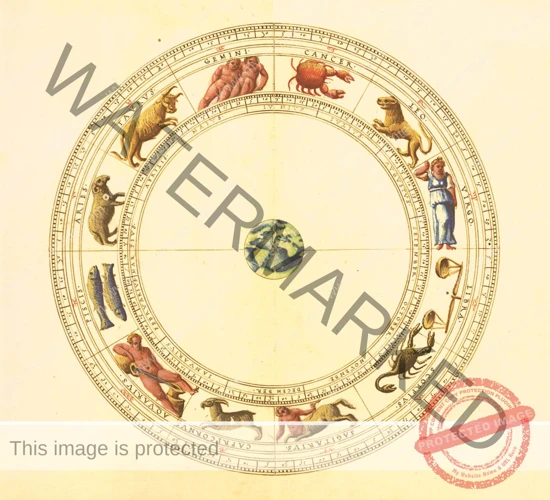
Indigenous cultures of North America have their own unique interpretations and stories associated with the constellation Gemini. Among the Navajo people, Gemini is linked to the tale of the Hero Twins, Monster Slayer and Born-for-Water. These twins played significant roles in Navajo creation myths and were known for their heroic deeds and battles against monsters and evil beings. The presence of Gemini in the night sky serves as a reminder of the twins’ bravery and their eternal protection.
In the Lakota Sioux tradition, Gemini represents the two spirits, Wi and Skan, who are associated with the duality of the mind and spirit. The two spirits embody balance, harmony, and the interconnectedness of all things. Gemini serves as a guiding symbol for these principles, reminding the Lakota Sioux to embrace the unity of opposites.
In many African indigenous cultures, the constellation Gemini is associated with pairs of animals that hold specific significance. For example, in the Dogon tradition of Mali, Gemini represents the antelope and the chameleon. These animals symbolize the duality between terrestrial and celestial realms, representing the interconnectedness of the natural world.
In the Zulu culture of South Africa, Gemini is associated with the duiker, a small African antelope, and the crocodile. The duiker symbolizes agility, adaptability, and swiftness, while the crocodile embodies strength and wisdom. Together, they represent the balance between quick thinking and careful assessment, a lesson passed down through generations.
Through these examples, it becomes evident that Gemini holds deep cultural significance in indigenous societies around the world. Each culture infuses their own unique interpretations and symbolism into the constellation, offering a diverse tapestry of beliefs and values.
Native American Indigenous Cultures
The constellation Gemini also holds cultural significance in various Native American Indigenous cultures, each with their own unique interpretations and stories. Among the Lakota Sioux, Gemini is associated with the concept of the Two Spirit. Two Spirit individuals are seen as embodying both masculine and feminine qualities and are respected and revered within their communities. The presence of Gemini in the night sky is often seen as a reminder of the importance of balance and harmony between masculine and feminine energies.
In Navajo mythology, Gemini represents the Hero Twins, also known as the Monster Slayers. According to the Navajo creation story, the Hero Twins defeated various monsters and restored order to the world. Their story symbolizes courage, bravery, and the triumph of good over evil. The Hero Twins are seen as protectors and guardians, and Gemini serves as a constant reminder of their heroic deeds.
Among the Hopi people, Gemini is associated with the tale of the Twin War Gods, Po’okonghoya and Polongahoya. These gods are believed to have aided the Hopi in times of conflict and brought about peace and prosperity. Gemini serves as a beacon of hope, reminding the Hopi of the protection and guidance of these divine twins.
It is clear that Gemini holds a special place in Native American Indigenous cultures, symbolizing important concepts such as balance, courage, and protection. The stories and beliefs surrounding Gemini showcase the deep connection between the spiritual and celestial realms in these cultures.
African Indigenous Cultures
African indigenous cultures have their own unique interpretations and stories surrounding the constellation Gemini. In the Dogon tribe of Mali, the constellation is believed to represent the celestial twins known as “the Nommo.” According to Dogon oral traditions, the Nommo are amphibious beings who descended from the Sirius star system to bring knowledge and wisdom to humanity. They are seen as the ancestors of the Dogon people and are associated with the creation of life and the balance between masculine and feminine energies.
Similarly, in the Yoruba culture of Nigeria, Gemini is associated with the Orisha known as Ibeji, the divine twins. Ibeji is revered as the deity of the duality of existence and represents the concept of two being one. The Yoruba people believe that twins possess special spiritual abilities and bring blessings to their families and communities.
Across different African indigenous cultures, Gemini is often linked to themes of duality, balance, and the interconnectedness of opposing forces. These interpretations emphasize the importance of harmonizing conflicting energies to maintain spiritual and societal equilibrium, reflecting the profound wisdom embedded in African cosmology.
Contemporary Significance of Gemini
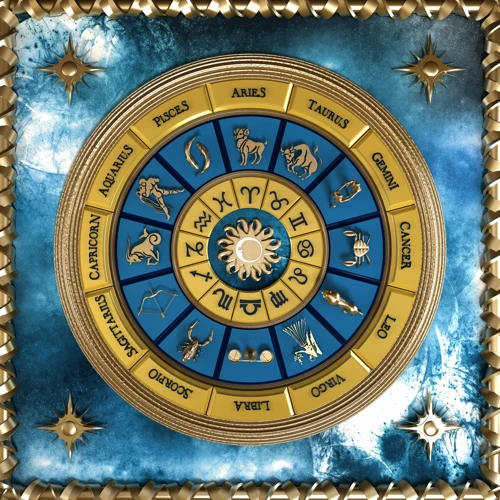
Gemini’s cultural significance extends beyond ancient mythology and is still relevant in contemporary society. In pop culture, Gemini is often associated with the traits of being dynamic, adaptable, and intellectually curious. These qualities are commonly portrayed in movies, TV shows, and books, where characters born under the sign of Gemini are depicted as quick-witted and versatile.
Astrologically, Gemini continues to hold significance in modern interpretations. In Western astrology, it is regarded as an air sign and is associated with communication, socializing, and the exchange of ideas. Geminis are believed to be excellent communicators, masters of conversation, and natural multitaskers. They are known for their intellectual agility and ability to adapt to various situations.
In addition to Western astrology, Vedic astrology, which originated in ancient India, also recognizes the significance of Gemini. In Vedic astrology, Gemini is known as Mithuna and is associated with intelligence, curiosity, and flexibility. Just like in Western astrology, Geminis are seen as creative and versatile individuals who have a knack for adapting to different environments and situations.
While Gemini is not traditionally part of the Mayan astrology system, which is known for its intricate calendar system, its presence in Western astrology has permeated popular culture worldwide. This further reinforces its contemporary significance.
The cultural significance of Gemini is not limited to astrology and pop culture. The exploration of Gemini’s contemporary relevance provides a deeper understanding of how ancient beliefs and celestial symbolism continue to influence our modern lives.
Pop Culture References
Gemini’s cultural significance extends beyond ancient mythology and finds its place in the realm of pop culture. In movies, television shows, and music, references to Gemini are frequently intertwined with themes of duality, complex relationships, and the juxtaposition of contrasting personalities.
One notable example of Gemini’s influence in pop culture is found in the award-winning film “Fight Club.” The main character, played by Brad Pitt, embodies the dual nature of Gemini, with his charismatic and outgoing persona contrasting with his introverted, introspective side. This portrayal of the Gemini archetype explores the internal struggle between different aspects of one’s personality.
Gemini’s influence is also evident in the music industry. Famous Gemini artists, such as Kanye West and Kendrick Lamar, have used their platforms to express the complexities of their identities and the multiplicity of perspectives they navigate. Their lyrics often delve into themes of duality, self-reflection, and the constant search for balance.
Additionally, Gemini’s association with communication and intellect is reflected in the realm of technology and social media. Platforms like Twitter, known for concise and quick-witted messages, align with Gemini’s communicative nature. Gemini individuals are often seen as adept at expressing themselves and connecting with others, making the constellation’s influence particularly relevant in the digital age.
Through its portrayal in various forms of media, Gemini continues to captivate and resonate with audiences. Its representation in pop culture allows for exploration of complex themes and provides a platform for artists and creators to delve into the multifaceted nature of human experience.
Astrological Interpretations Today
Today, astrological interpretations of Gemini have evolved to incorporate the characteristics associated with the constellation and the astrological sign. In Western astrology, Gemini is recognized as an air sign, representing intellectual curiosity, adaptability, and versatility. Geminis are often seen as sociable and communicative individuals who excel in areas such as writing, public speaking, and networking. They are known for their quick thinking and ability to absorb information from various sources.
In Vedic astrology, Gemini is associated with the lunar mansion called Ardra, which is ruled by the planet Rahu. This mansion is connected to transformation and purification, reflecting the dual nature of Gemini and the potential for growth and change. Those born under this influence are believed to possess a deep sense of self-awareness and a capacity to overcome challenges in their lives.
The Mayan astrology system, with its intricate calendar, also recognizes the significance of Gemini. Governed by the ruling deity Ix, Geminis in the Mayan tradition are considered adaptable and flexible individuals. They possess a strong sense of intuition and are often seen as mediators and problem solvers within their communities. The Mayans attributed great importance to the alignment of celestial bodies with human destinies, making Gemini an integral part of their astrological system.
Astrological interpretations of Gemini today provide individuals with insights into their personality traits, strengths, and potential areas of growth. Whether it be in Western astrology, Vedic astrology, or the intricate Mayan calendar system, the multifaceted nature of Gemini continues to influence and shape our understanding of ourselves and our place in the cosmos.
Conclusion

The constellation Gemini holds a profound cultural significance in various societies throughout history. From the mythical tales of the Greek Dioscuri to the celestial love story of the Weaver Maid and the Cowherd in Chinese mythology, Gemini embodies themes of duality, love, and cosmic balance. These ancient mythologies not only provide insight into the beliefs and values of different cultures but also highlight humanity’s enduring fascination with the stars and their mysteries.
Beyond ancient mythology, Gemini also holds significance in the realm of astrology. Western astrology associates Gemini with traits such as adaptability, intelligence, and social versatility, while Vedic astrology considers it as a symbol of communication and intellectual pursuits. Even the Mayans, who developed an intricate calendar system, recognized the influence of Gemini in their cosmic calculations. As time progressed, Gemini found its way into various art forms, including paintings, sculptures, and literary works, further solidifying its cultural presence.
Today, in contemporary society, Gemini continues to capture our imagination. It appears in pop culture references, be it in movies, television shows, or music. Astrologers interpret the characteristics of Gemini and offer personalized insights based on zodiac signs. The allure and cultural significance of Gemini remain alive in our modern world, connecting us to the ancient stories and beliefs that shaped our understanding of the constellation.
In conclusion, the constellation Gemini has left an indelible mark on different societies throughout history. Through ancient mythology, astrology, art, and literature, Gemini has become a symbol of duality, love, and cosmic harmony. Its cultural significance persists, perpetuating our fascination with the heavens above and reminding us of the intricate tapestry that intertwines human beliefs and celestial wonders. Exploring the cultural significance of Gemini not only illuminates the history and traditions of various societies but also invites us to ponder our place within the vast universe.
Frequently Asked Questions

1. What is the origin and meaning of the Zodiac constellations?
The Zodiac constellations have their origins in ancient civilizations like the Mesopotamians and Greeks. They represent a belt of twelve constellations along the ecliptic path that the Sun appears to travel throughout the year. Each constellation has its own unique mythological and cultural significance, shaping the interpretation of astrology and the personality traits associated with each Zodiac sign.
2. How does Gemini fit into the intricate Mayan calendar system?
The Mayans had a complex calendar system that consisted of multiple interlocking cycles. While Gemini itself may not have been specifically referenced in the Mayan calendar, the movements and positions of celestial bodies like the Sun, Moon, and planets played a significant role in Mayan astrology and the calculation of auspicious dates for various events.
3. Are there any connections between Gemini and the lesser-known Ophiuchus constellation?
While both Gemini and Ophiuchus are part of the Zodiac family, they have distinct mythological and astrological backgrounds. The Ophiuchus constellation is associated with the Greek myth of Asclepius, the god of medicine, and represents healing and transformation. Despite its intriguing history and symbolism, Ophiuchus is not traditionally considered one of the twelve Zodiac signs.
4. How are the twin gods Castor and Pollux honored in ancient Greek culture?
Castor and Pollux, the divine twins of Greek mythology, were highly revered in ancient Greek culture. They were associated with protection and were worshipped as patron deities of sailors. Many temples, statues, and festivals were dedicated to them, and they were believed to offer aid and safety to those who embarked on seafaring journeys.
5. What role does Gemini play in Vedic astrology?
In Vedic astrology, the constellation Gemini, known as Mithun, is associated with the planet Mercury and is considered a positive and intellectually inclined sign. Individuals born under this sign are believed to possess strong communication skills, adaptability, and a desire for learning and knowledge.
6. Are there any literary references to Gemini in ancient texts?
Absolutely! Gemini has made appearances in various ancient texts and literary works. For instance, in Virgil’s epic poem “The Aeneid,” Castor and Pollux appear as protectors of Aeneas and his fleet during their tumultuous journey. The twins also find mentions in other ancient Greek dramas, poems, and mythological narratives, further cementing their legendary status.
7. How do Native American indigenous cultures interpret the significance of Gemini?
The interpretation of Gemini varies among different Native American indigenous cultures. For some, it represents the interconnectedness of all things, emphasizing the harmony and balance between opposing forces. Others see it as symbolizing the relationship between earth and sky or embodying the concept of dualism in nature.
8. What is the contemporary significance of Gemini in pop culture?
Gemini continues to have a strong presence in popular culture today. It often represents contrasting or dual personalities, showcasing the inherent complexity of human nature. In films, books, and music, Gemini is frequently used as a symbolic device to explore themes of identity, relationships, and personal growth.
9. How do astrologers interpret the personality traits of Gemini individuals?
Astrologers believe that Gemini individuals are adaptable, sociable, and intellectually curious. They are often seen as skilled communicators, with a quick wit and a penchant for gathering information. Gemini personalities are thought to be charismatic, versatile, and drawn to a wide range of interests and hobbies.
10. Does Gemini hold any spiritual significance or symbolism?
For some, Gemini holds spiritual significance as a representation of the balance between opposing forces and the inherent duality within oneself. It can also symbolize the ability to adapt and find harmony in conflicting elements. Additionally, Gemini’s association with communication and the exchange of ideas can be seen as a spiritual reminder of the importance of effective expression and connection with others.
References
Frequently Asked Questions

What is the cultural significance of the constellation Gemini?
The constellation Gemini holds significant cultural value in various societies around the world due to its prevalence in ancient mythology, astrology, art, and indigenous cultures.
How does Gemini feature in Greek mythology?
In Greek mythology, Gemini is associated with the story of Castor and Pollux, the twin brothers who were born from different fathers but shared the same mother. They were known for their bravery, as well as their close bond.
What is the significance of Gemini in Egyptian mythology?
In Egyptian mythology, Gemini is linked to the twin gods Horus and Set. Horus represents light and Set represents darkness, symbolizing the eternal struggle between good and evil.
How is Gemini portrayed in Chinese mythology?
In Chinese mythology, Gemini is represented by the constellation Shuangxi, which means “the pair of twins.” The constellation is associated with harmony and balance, reflecting the importance of duality in Chinese culture.
What is the role of Gemini in Western astrology?
In Western astrology, Gemini is one of the twelve zodiac signs and is characterized by traits such as adaptability, communication skills, and intellectual curiosity. People born under Gemini are believed to be social, expressive, and versatile.
How does Gemini feature in Vedic astrology?
In Vedic astrology, Gemini is known as Mithuna, which means “the couple.” People born under this sign are believed to possess qualities such as intelligence, wit, and flexibility. Mithuna is associated with the planet Mercury.
What is the significance of Gemini in Mayan astrology?
In Mayan astrology, Gemini is associated with the jaguar, a powerful and revered animal in Mayan culture. It represents duality and the ability to exist in both the physical and spiritual realms.
How is Gemini portrayed in art and literature?
Gemini is often depicted in paintings and sculptures as two individuals holding hands or embracing, symbolizing the inseparable bond between twins or the harmonious coexistence of contrasting qualities.
What is the role of Gemini in indigenous cultures?
In Native American indigenous cultures, Gemini represents the balance between masculine and feminine energies. It signifies the interconnectedness of all things and the need for harmony within oneself and with the natural world.
How does Gemini hold contemporary significance?
Gemini continues to be referenced in popular culture, such as movies, music, and literature, often symbolizing duality, versatility, and the complexity of human nature. Astrologers interpret Gemini as a sign associated with effective communication and adaptability in today’s context.







